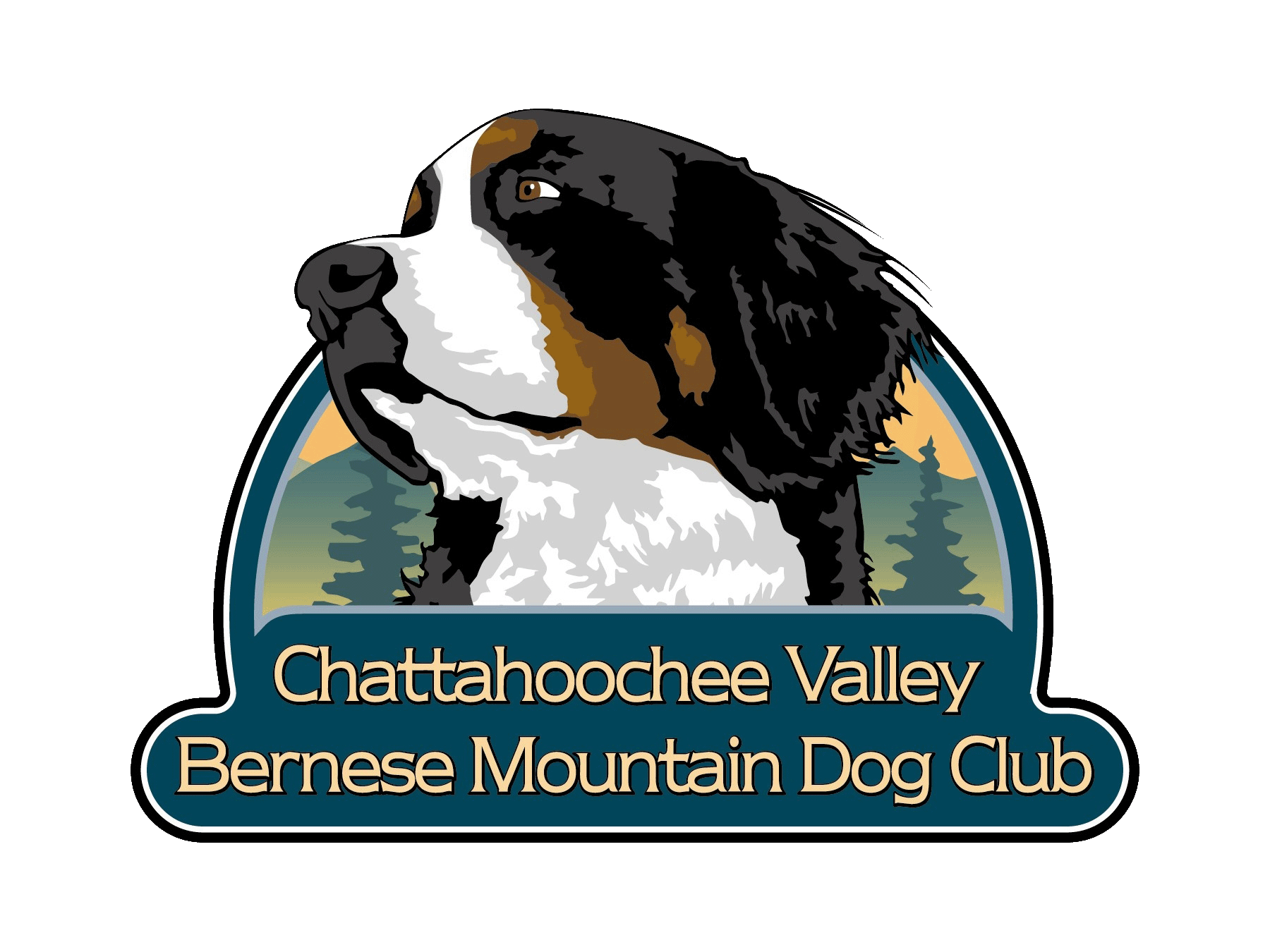Breed Info
- From the AKC website
- Bernese Mountain Dog Breed Standard
- Working Group
General Appearance
The Bernese Mountain Dog is a striking, tri-colored, large dog. He is sturdy and balanced. He is intelligent, strong and agile enough to do the draft and droving work for which he was used in the mountainous regions of his origin. Dogs appear masculine, while bitches are distinctly feminine.
Size, Proportion, Substance
Measured at the withers, dogs are 25 to 27½ inches; bitches are 23 to 26 inches. Though appearing square, Bernese Mountain Dogs are slightly longer in body than they are tall. Sturdy bone is of great importance. The body is full.
Head
Expression is intelligent, animated and gentle. The eyes are dark brown and slightly oval in shape with close-fitting eyelids. Inverted or everted eyelids are serious faults. Blue eye color is a disqualification. The ears are medium sized, set high, triangular in shape. gently rounded at the tip, and hang close to the head when in repose. When the Bernese Mountain Dog is alert, the ears are brought forward and raised at the base; the top of the ear is level with the top of the skull. The skull is flat on top and broad, with a slight furrow and a well-defined, but not exaggerated stop. The muzzle is strong and straight. The nose is always black. The lips are clean and, as the Bernese Mountain Dog is a dry-mouthed breed, the flews are only slightly developed. The teeth meet in a scissors bite. An overshot or undershot bite is a serious fault. Dentition is complete.
Neck, Topline, Body
The neck is strong, muscular and of medium length. The topline is level from the withers to the croup. The chest is deep and capacious with well-sprung, but not barrel-shaped, ribs and brisket reaching at least to the elbows. The back is broad and firm. The loin is strong. The croup is broad and smoothly rounded to the tail insertion. The tail is bushy. It should be carried low when in repose. An upward swirl is permissible when the dog is alert, but the tail may never curl or be carried over the back. The bones in the tail should feel straight and should reach to the hock joint or below. A kink in the tail is a fault.
Forequarters
The shoulders are moderately laid back, flat-lying, well-muscled and never loose. The legs are straight and strong and the elbows are well under the shoulder when the dog is standing. The pasterns slope very slightly. but are never weak. Dewclaws may be removed. The feet are round and compact with well-arched toes.
Hindquarters
The thighs are broad, strong and muscular. The stifles are moderately bent and taper smoothly into the hocks. The hocks are well let down and straight as viewed from the rear. Dewclaws should be removed. Feet are compact and turn neither in nor out.
Coat
The coat is thick, moderately long and slightly wavy or straight. It has a bright natural sheen. Extremely curly or extremely dull-looking coats are undesirable. The Bernese Mountain Dog is shown in natural coat and undue trimming is to be discouraged.
Color & Markings
The Bernese Mountain Dog is tri-colored. The ground color is jet black. The markings are rich rust and clear white. Symmetry of markings is desired. Rust appears over each eye, on the cheeks reaching to at least the corner of the mouth, on each side of the chest, on all four legs, and under the tail. There is a white blaze and muzzle band. A white marking on the chest typically forms an inverted cross. The tip of the tail is white. White on the feet is desired but must not extend higher than the pasterns. Markings other than described are to be faulted in direct relationship to the extent of the deviation. White legs or a white collar are serious faults. Any ground color other than black is a disqualification.
Temperament
The temperament is self-confident, alert and good-natured, never sharp or shy. The Bernese Mountain Dog should stand steady, though may remain aloof to the attentions of strangers.
Disqualifications
Blue eye color. Any ground color other than black.
